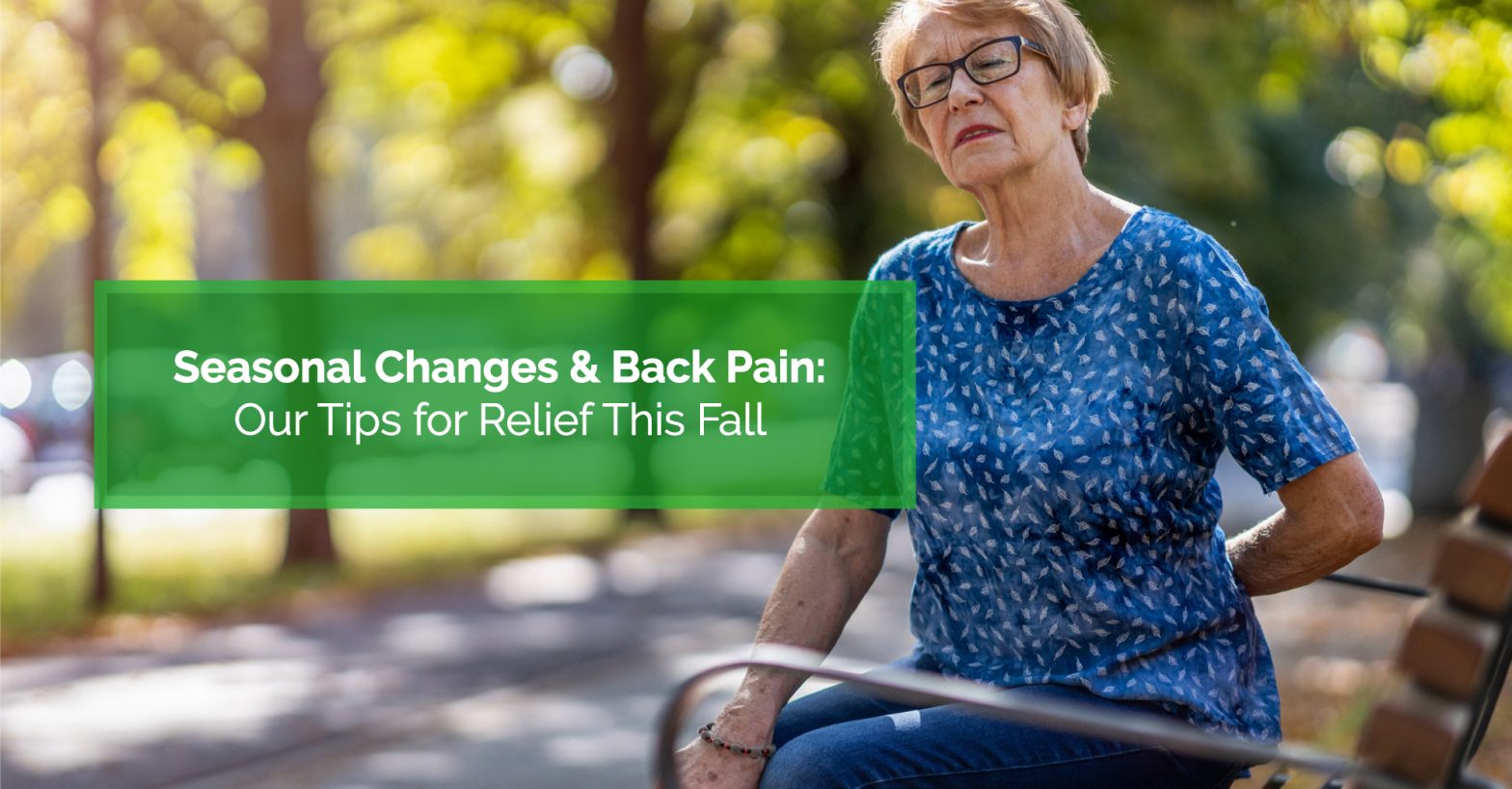Osteoarthritis Treatments: What You Need to Know...
Key Highlights: Osteoarthritis treatments focus on pain relief, restoring joint…
Read More
Posted by Dr. Scott Wilson | 15-Oct-2021
There is a long list of triggers for back pain. Long periods of standing, lifting improperly, over or under-exercising, and bad posture are only a few of the ways people commonly hurt their backs. One cause you might not think of is a change in the weather. Some people can even sense when cooler temperatures are approaching because they start to feel an ache in their back or joints. So, with the cold weather on the horizon, let’s look at why the temperature change can cause your back to start to hurt and what you can do to minimize the impact.
As with most parts of our bodies, our backs don’t do well with cold temperatures. The muscles, tendons and ligaments that support your spine can start to tighten up and contract when they begin to get cold. Cold weather causes soft tissue to stiffen up, which applies added pressure to your nerve endings. This process can significantly contribute to back pain and other related symptoms. Also, if you’ve already been experiencing back pain before the colder weather comes on, it can exacerbate and intensify your current condition.
Some experts believe that barometric pressure plays a big part in why cold weather causes back pain, as it can contribute to inflammation and swelling in parts of your back. Although there are several debates on why this is, various studies have found a link between back pain and cold weather. A study published in the Journal of Occupational and Environmental Medicine focused on construction workers in Sweden and found that those who worked outside experienced more backaches and pains than those who worked indoors.
Blood flow or circulation is another contributor to back pain when it’s cold out. Have you ever stepped outside of your home when it’s cold and felt a twinge or twitch in your back? This sensation is typically due to your body directing blood from your spine and supporting muscles to your organs. This action is a defense mechanism that your body uses to protect itself when it becomes vulnerable. The scientific name for this is vasoconstriction, which is a spasm of the pulmonary arteries. Soft tissue becomes stiff when it experiences decreased circulation, which can cause you to experience back pain.
It’s not just the cold temperatures that can cause you to have a backache. When colder weather hits, most people tend to spend more time indoors and are not as active as they generally are during the warmer months. This lack of activity can lead the muscles in the back to weaken, resulting in back pain.
As Canadians also spend more time indoors in winter, we might find ourselves eating more unhealthy foods. These comfort foods usually contain fewer of the nutrients that our spine and other body parts need to stay strong and healthy. So, try to eat a nutritious diet and ensure you get bundled up and enjoy some daily exercise to help decrease the chances of the weather affecting your back!
Of course, illness can also be a catalyst for back pain. Common illnesses that we may experience in the winter, such as flus and colds, come with muscle and joint pain. This can cause back pain, as well as keeping you away from being active. As anyone who has had bronchitis or pneumonia can attest to the fact that excessive coughing can also result in back pain.
Long winters require us to learn how to deal with the elements as a daily part of our lives, and learning how to combat the cold and mitigate what it can do to our bodies is a part of what comes with living in a northern climate. Luckily, there are a few ways you can help yourself deal with the back pain brought on by the cold weather. Here are a few tips to help get you and your back through another cold winter.
This tip may sound obvious, but many people leave their house ill-equipped for the cold. Since we go from warm homes to heated vehicles to comfortable workplaces, we might choose a thinner coat or leave the toque and mitts at home. Always stay bundled up and warm. This will decrease the extent to which your muscles and ligaments stiffen and tighten.
A strong back is less likely to experience back pain compared to a weaker back. Make sure you are doing some form of exercise daily to help keep you and your back limber. Stretching is also a vital tool in combating back pain. The more you keep your muscles loose, the less your chances are of getting a backache. Yoga is an excellent way to do this.
Freshly fallen snow might be lovely to look at but having to shovel it on an almost daily basis is not. If you don’t have a snowblower or friendly neighbour who does, be careful when shoveling snow. Don’t overexert yourself and your back. Try and get out shortly after the snow has fallen, so it’s lighter, take plenty of breaks and remember to bend and lift with your knees not your back.
You also need to watch where you’re walking in the winter, as you want to avoid dangerous and painful falls or slips. You might be diligent at putting down sand or deicer on your sidewalks and laneway, but not everyone is. Having a good pair of winter boots is also integral. Make sure they have good traction and that the bottoms aren’t too worn down when walking on snow and ice.
Winter can be a wonderful time of the year when you stay warm, active, and healthy. Doing so can help you avoid painful and irritating back problems that can leave you disliking winter and hibernating while others enjoy the outdoors.
If you’re experiencing any form of back pain and need help getting back to doing the things you enjoy the most, contact us today and let us show you why, at Physiomed, Healthier Starts Here.

Key Highlights: Osteoarthritis treatments focus on pain relief, restoring joint…
Read More
Key Highlights: Runner's knee, or patellofemoral pain syndrome, is a…
Read More
Key Highlights: Upper back and neck pain can be caused…
Read More
Key Highlights: Many people want to lose belly fat for…
Read More
Key Highlights: Vestibular physical therapy, or physiotherapy, is a specialized…
Read More
Key Highlights: Tennis elbow, or lateral epicondylitis, is a condition…
Read More